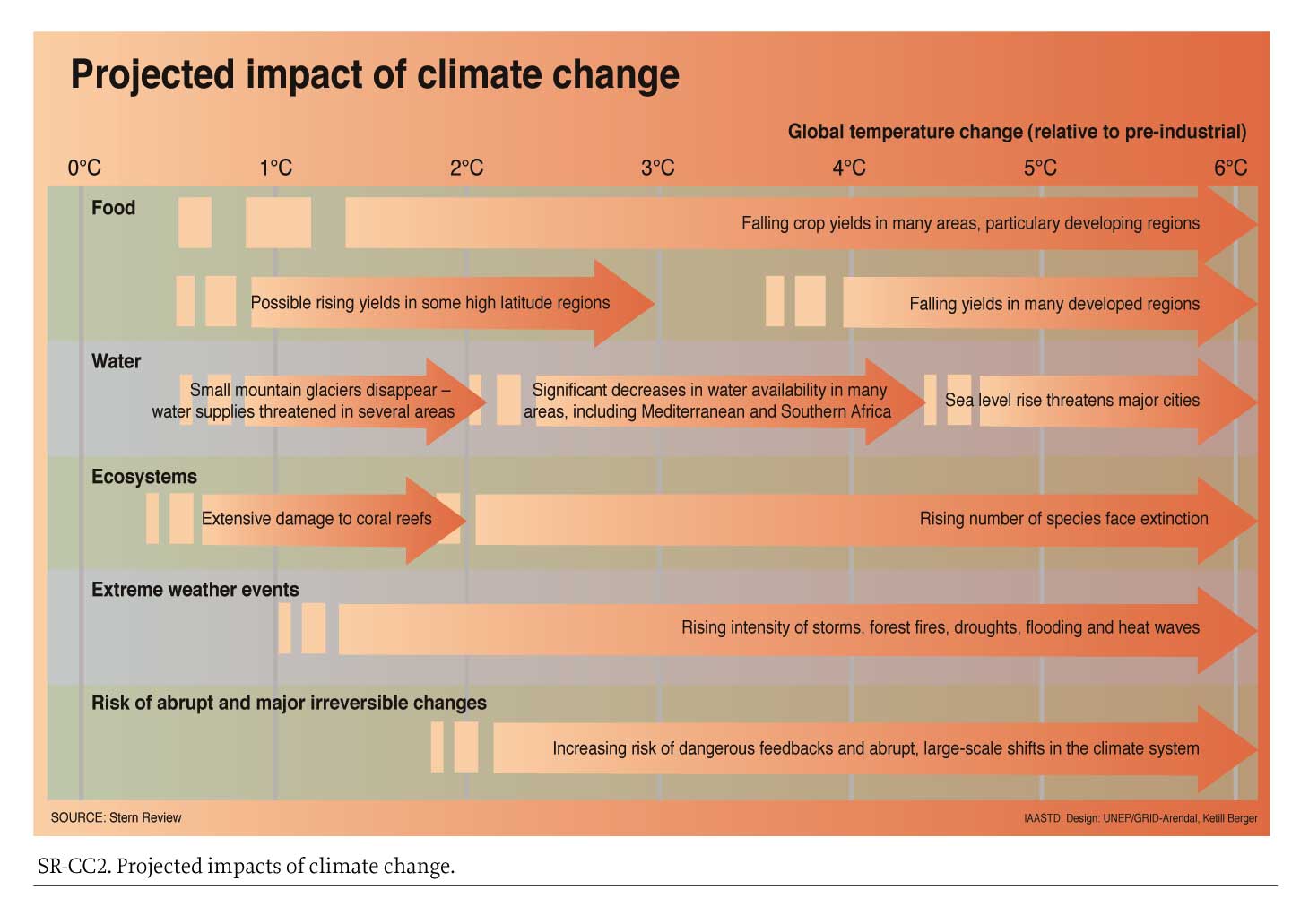
| Previous | Return to table of contents | Search Reports | Next |
| « Back to weltagrarbericht.de | ||
48 | IAASTD Synthesis Report
(IPCC) Fourth Assessment Report moderate local increases in temperature (1-2°C) can have small beneficial impacts on crop yields. However, in low-latitude regions, even such moderate temperature increases are likely to have negative yield impacts for major cereals. Some negative impacts are already visible, especially in developing countries. [ESAP Chapter 2; Global Chapter 5; NAE Chapter 3]. Further warming will have increasingly negative impacts, particularly affecting production in food insecure regions. Warming in NAE will lead to a northward expansion of suitable cropping areas as well as a reduction of the growing period of crops such as cereals, but results, on the whole, project the potential for global food production to increase with increases in local average temperature over a range of 1 to 3°C, and above this range to decrease. |
|
rates of evapotranspiration, shifts in ratios between snowfall and rainfall and the timing of water availability, and with the reduction of water stored in mountain glaciers. Many climate impact studies project global water problems in the near future unless appropriate action is taken to improve water management and increase water use efficiency. Projections suggest that by 2050 internal renewable water is estimated to increase in some developed countries, but is expected to decrease in most developing countries [Global Chapter 5]. |

| Previous | Return to table of contents | Search Reports | Next |
| « Back to weltagrarbericht.de | ||